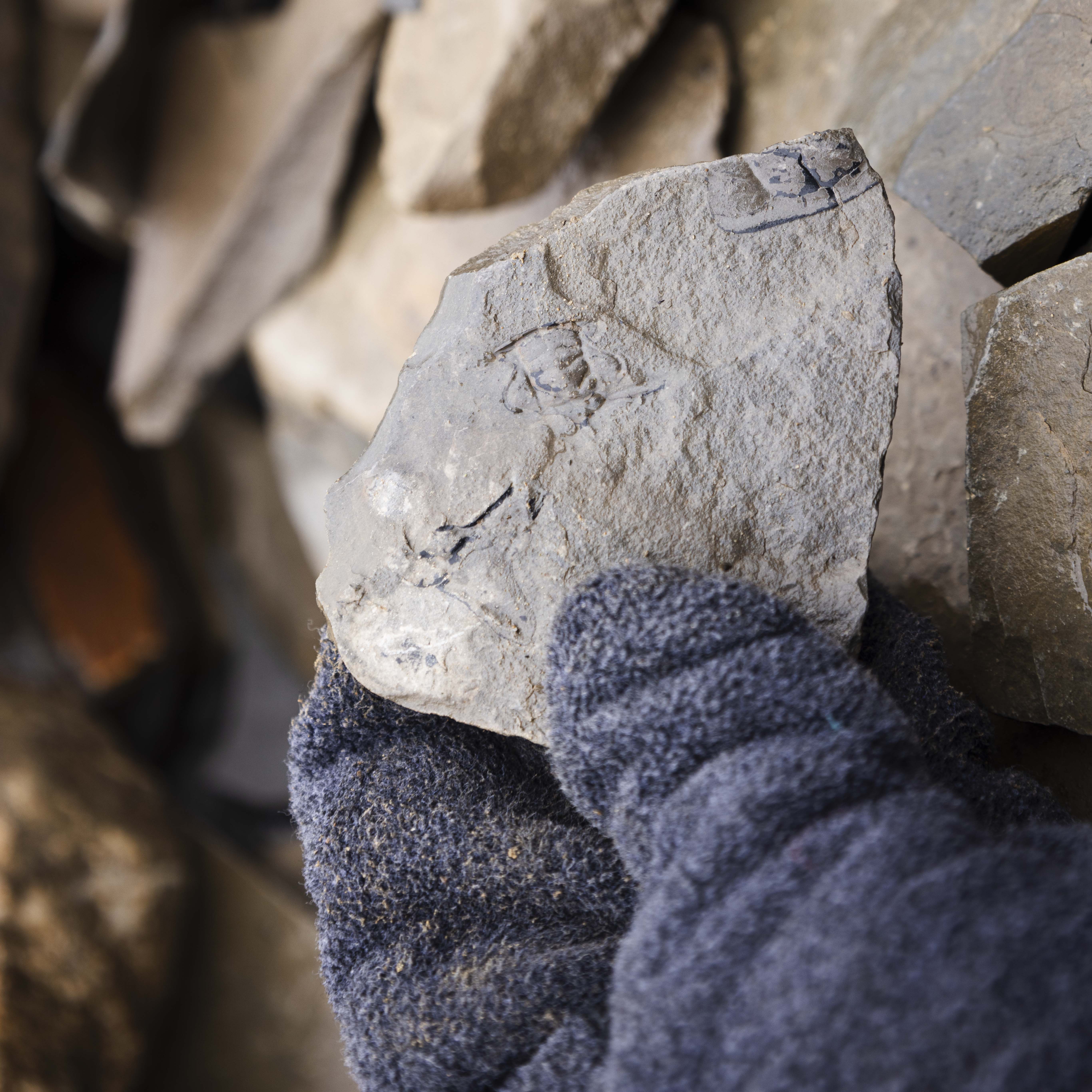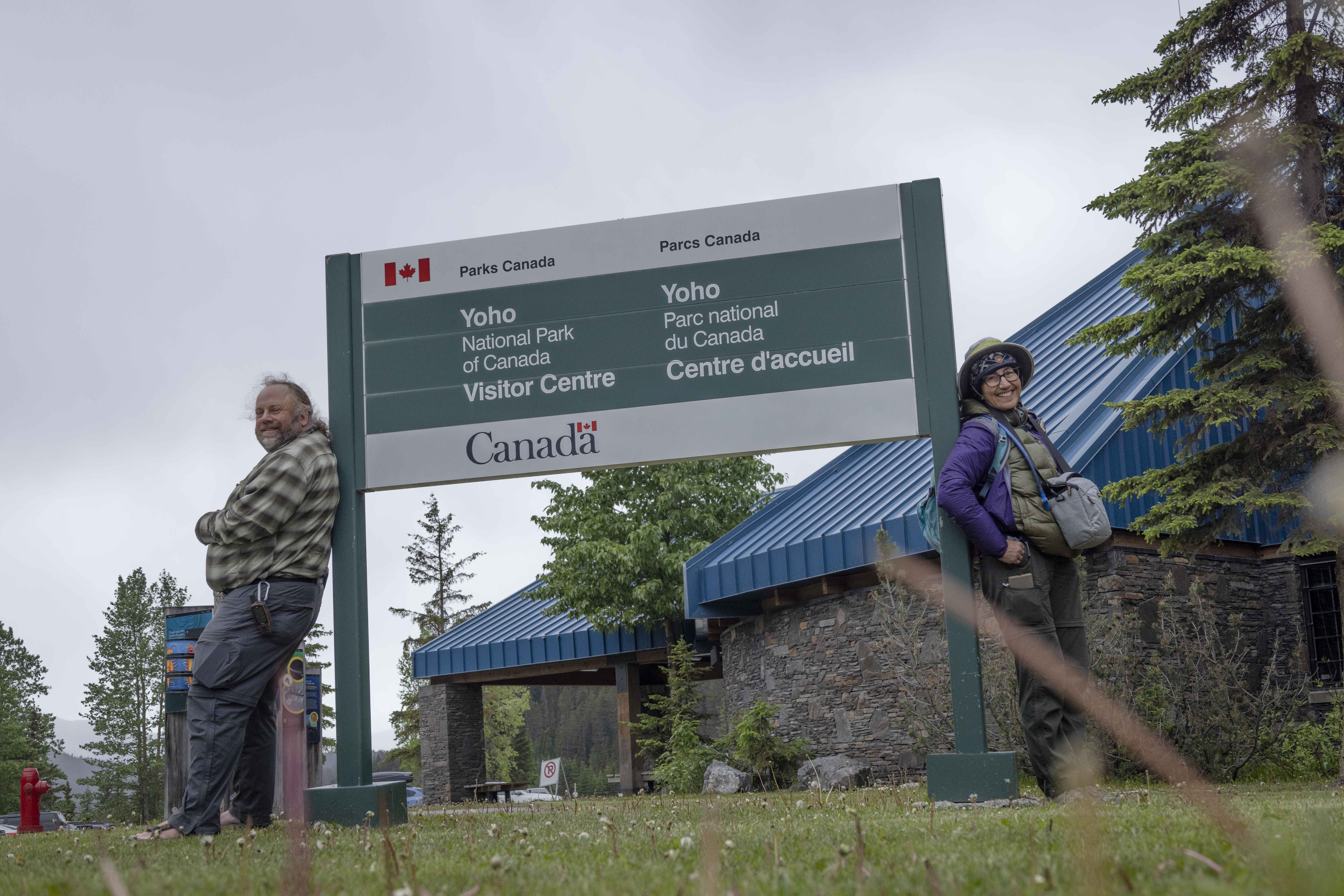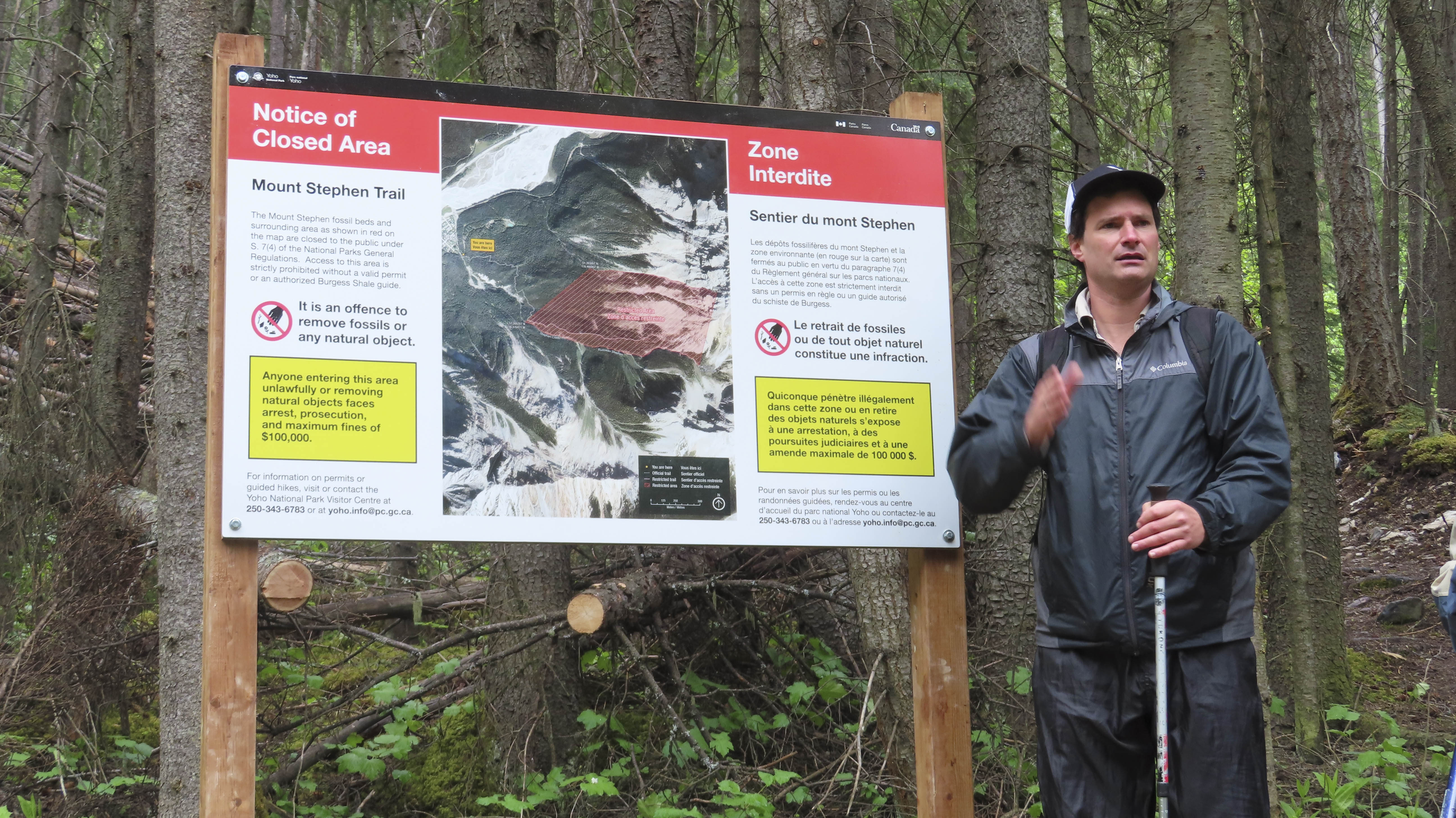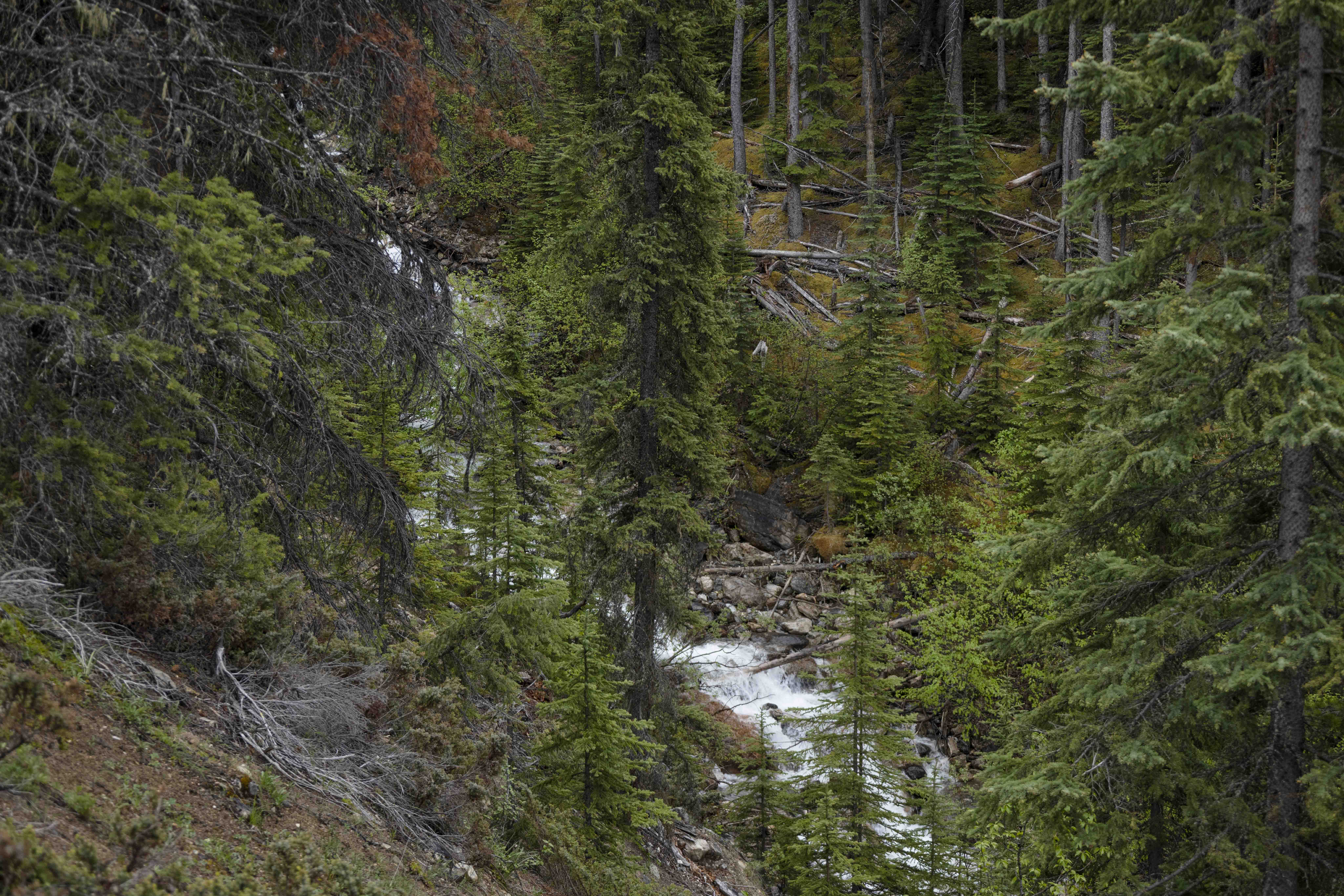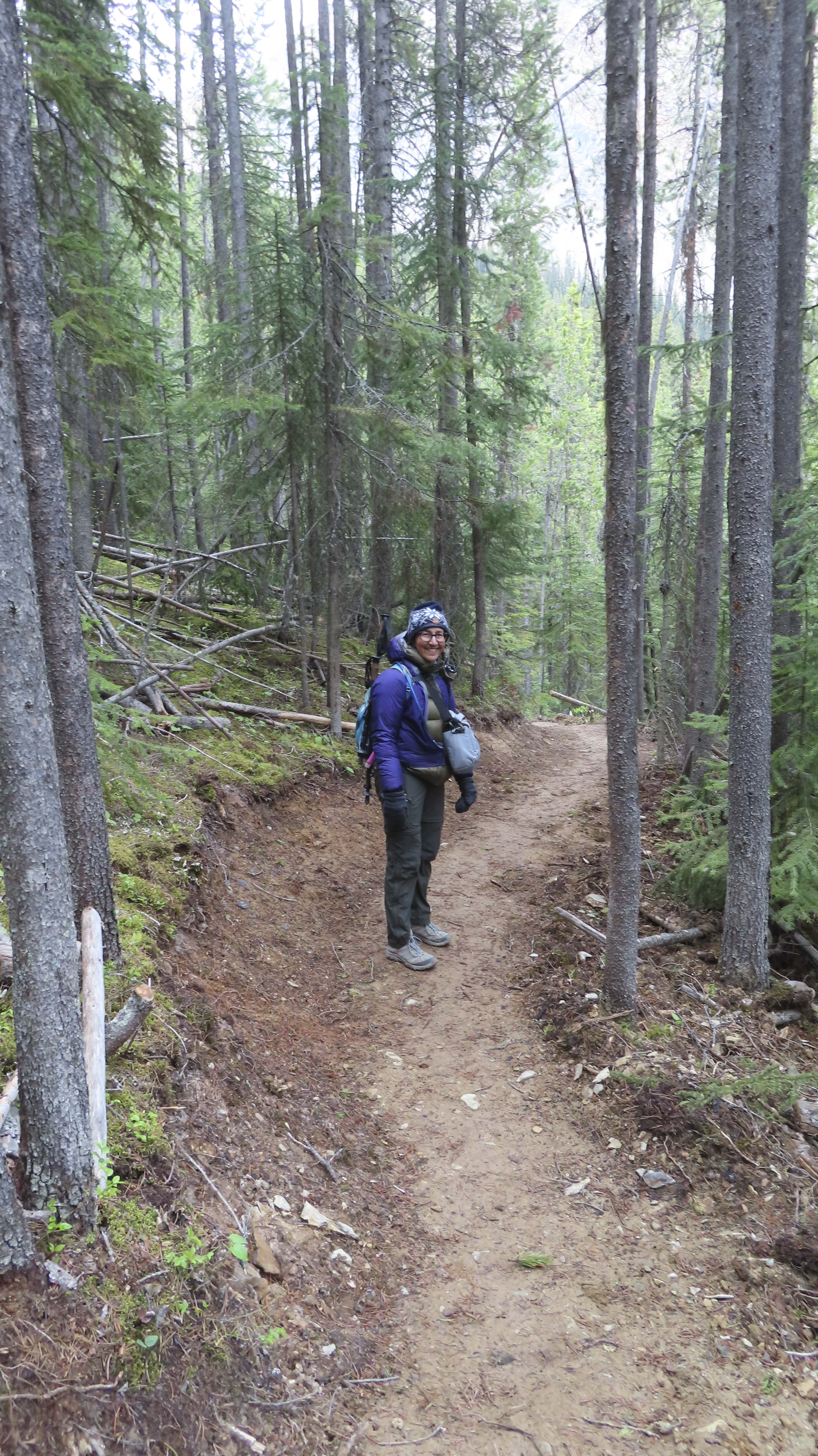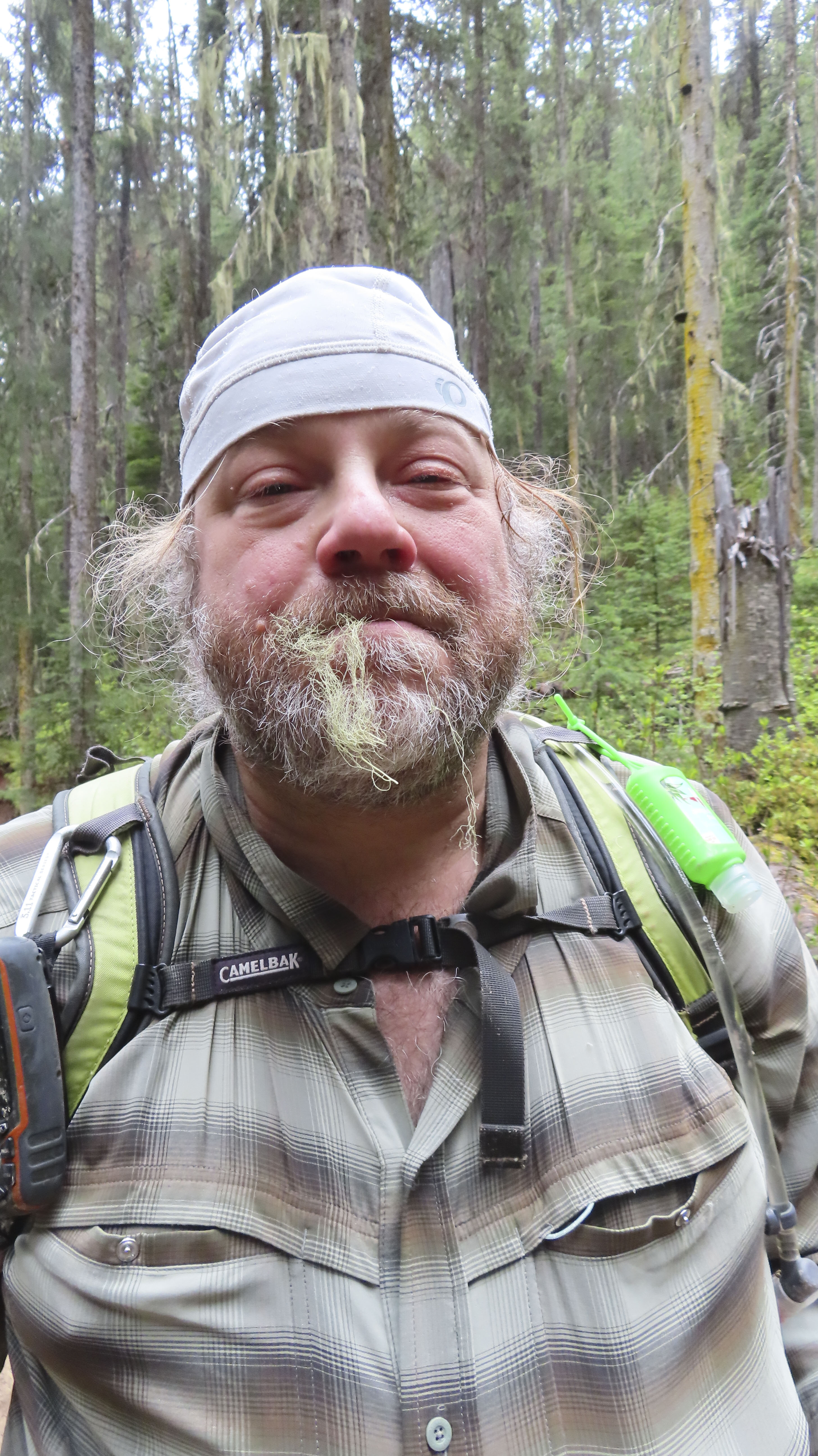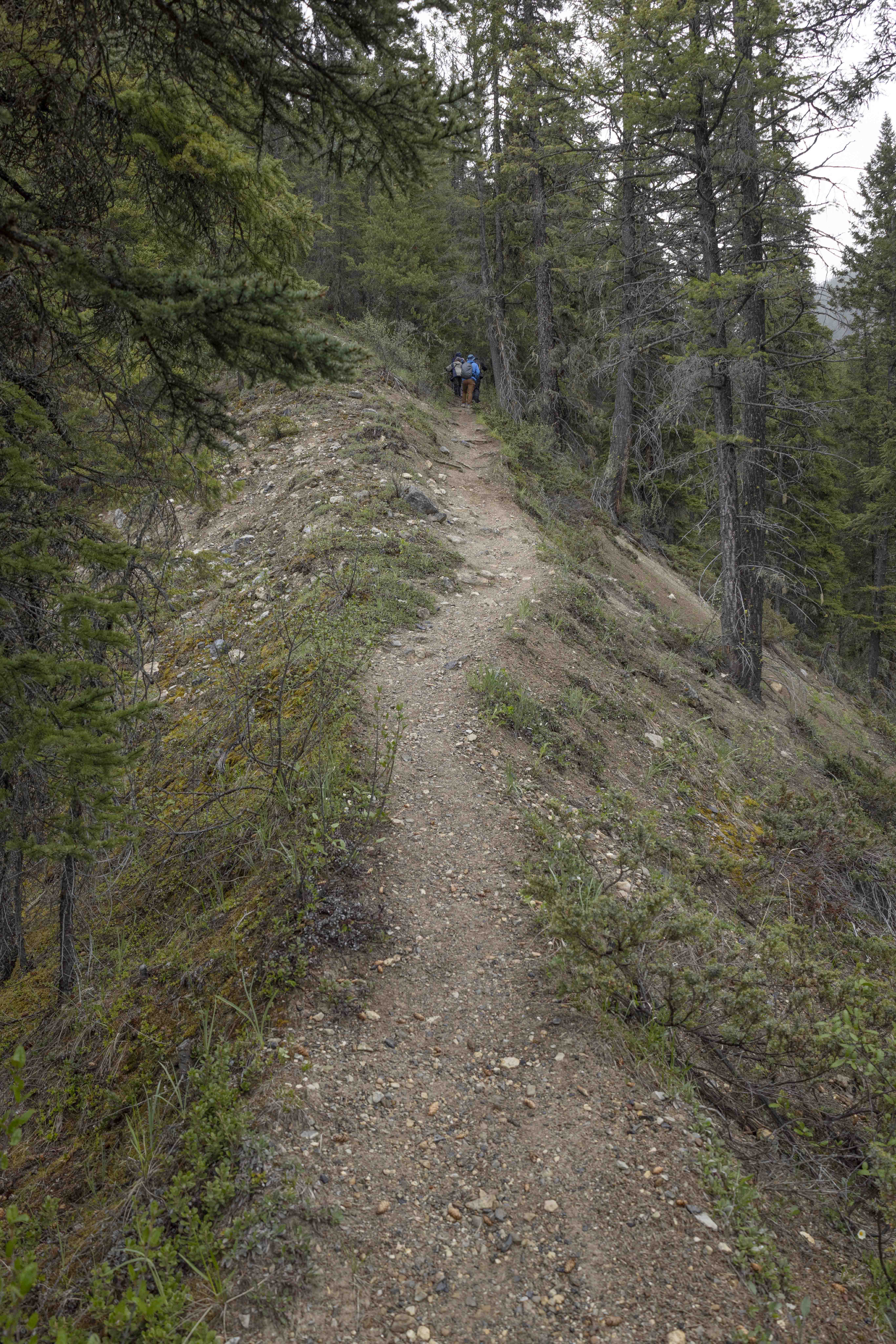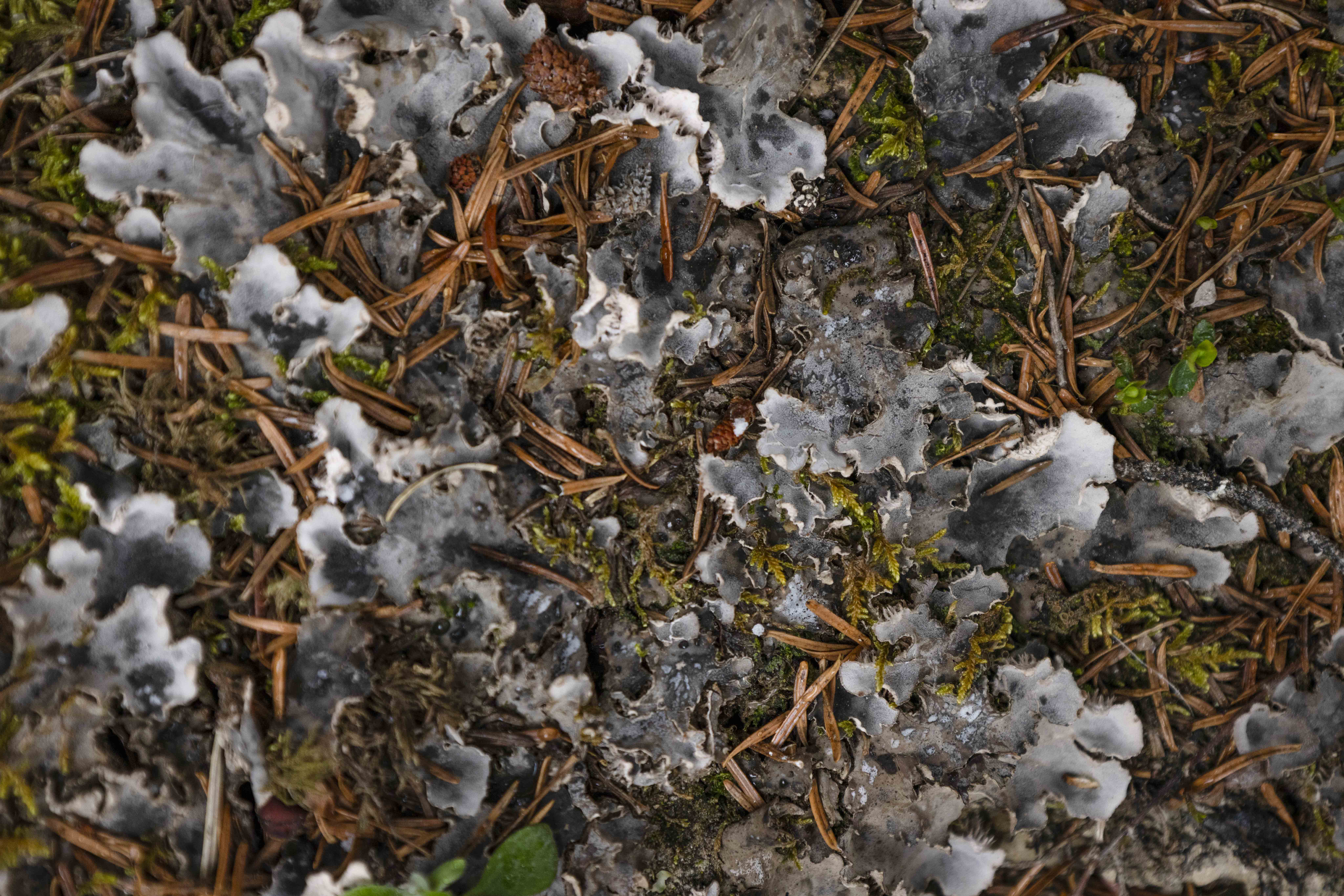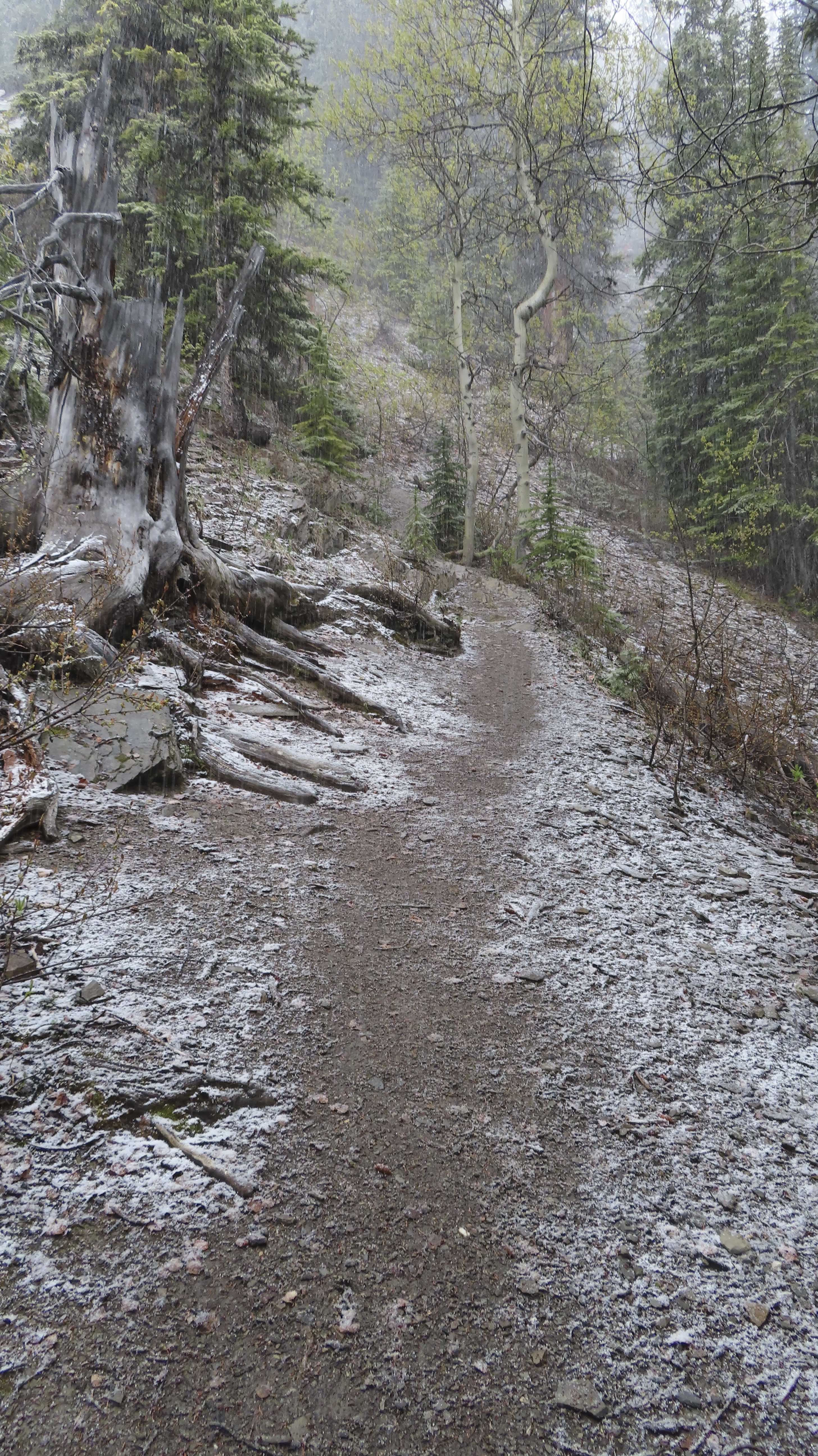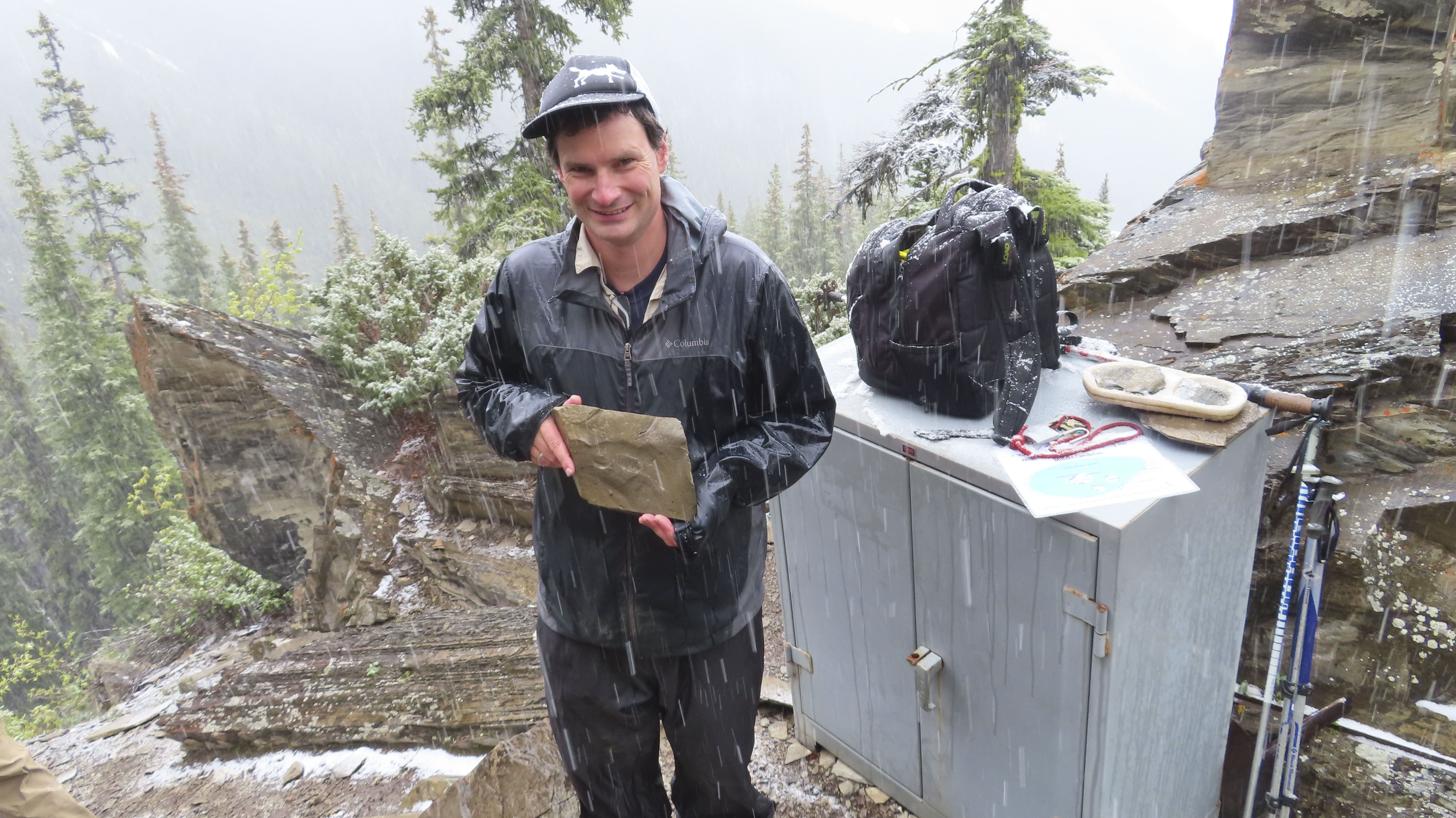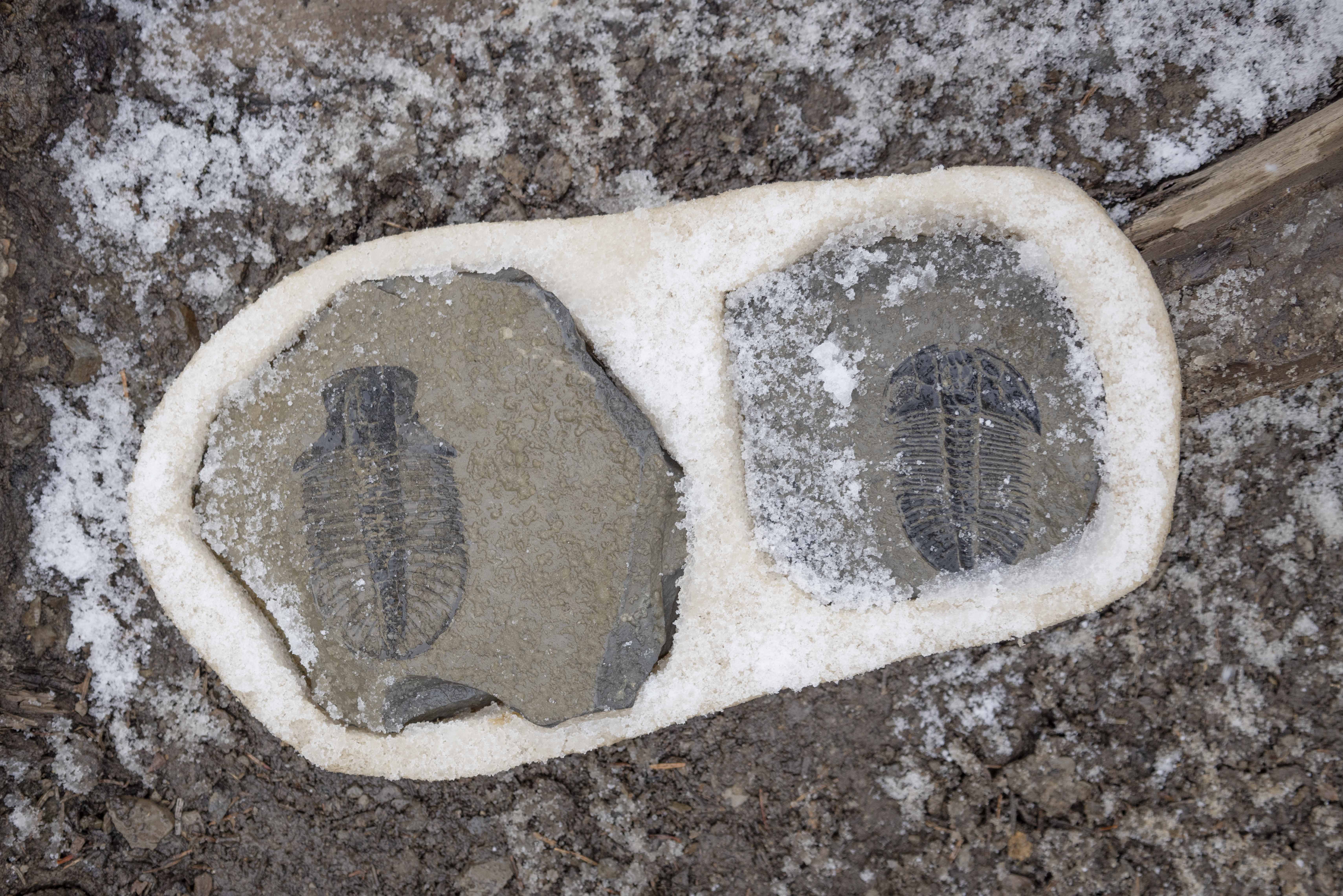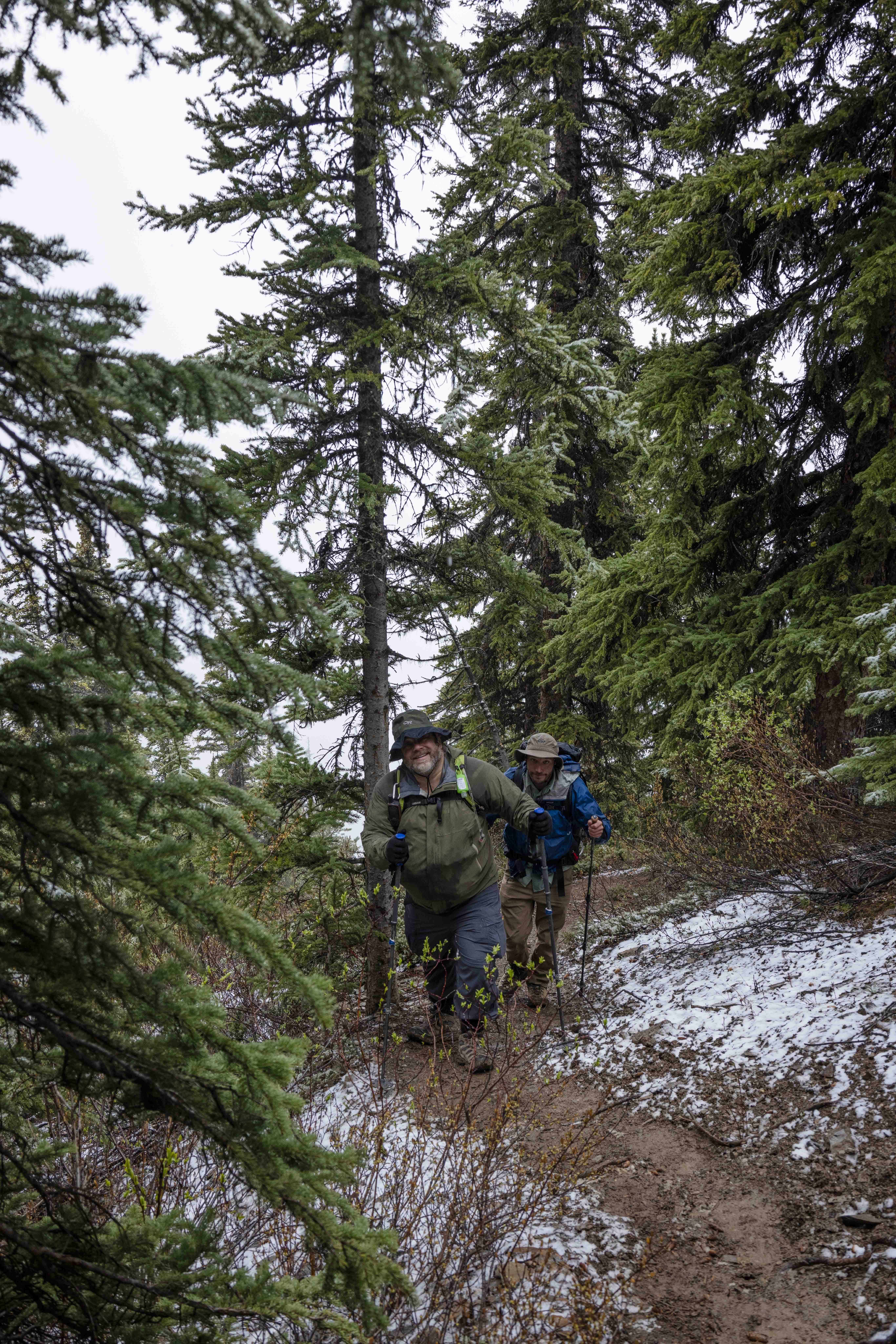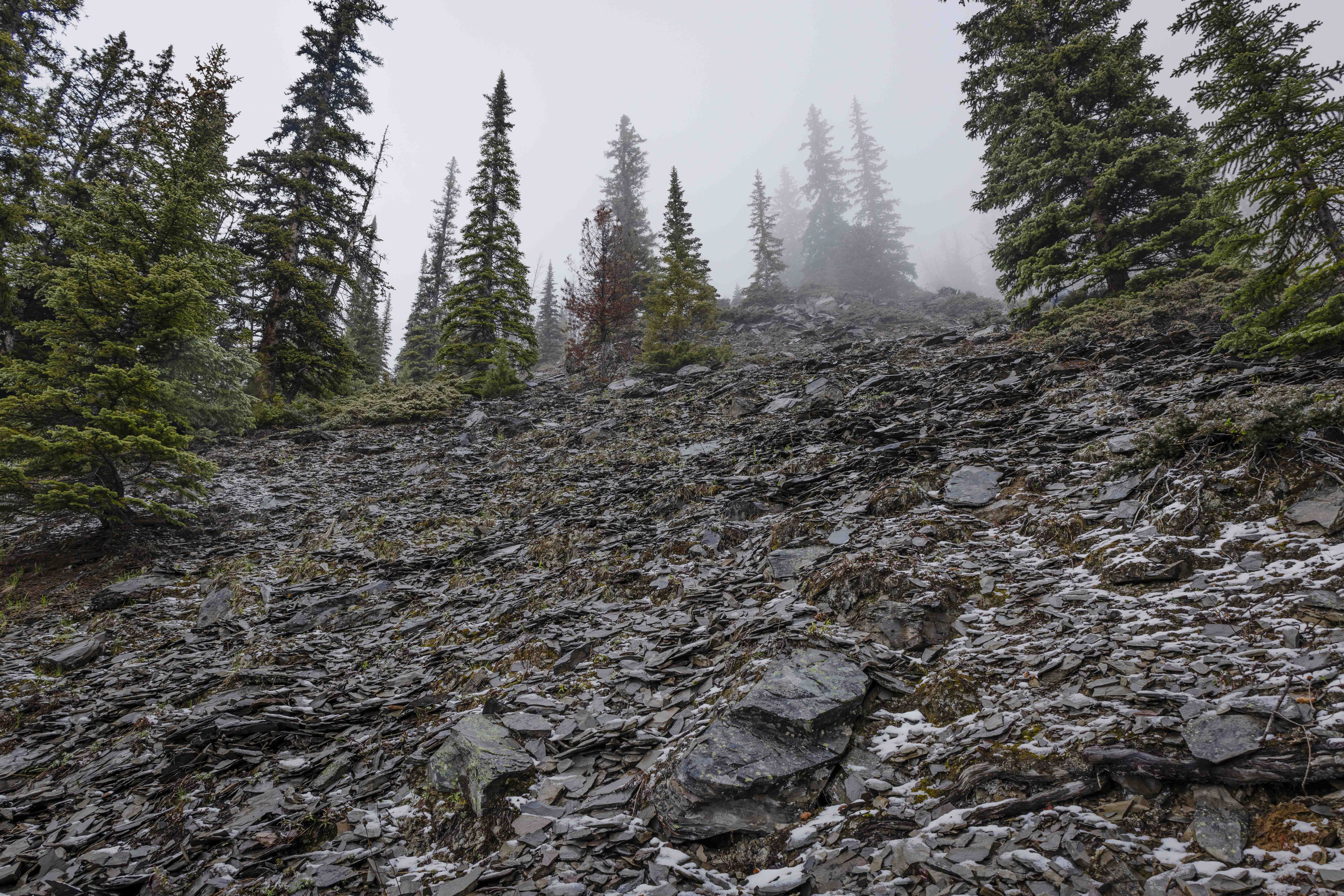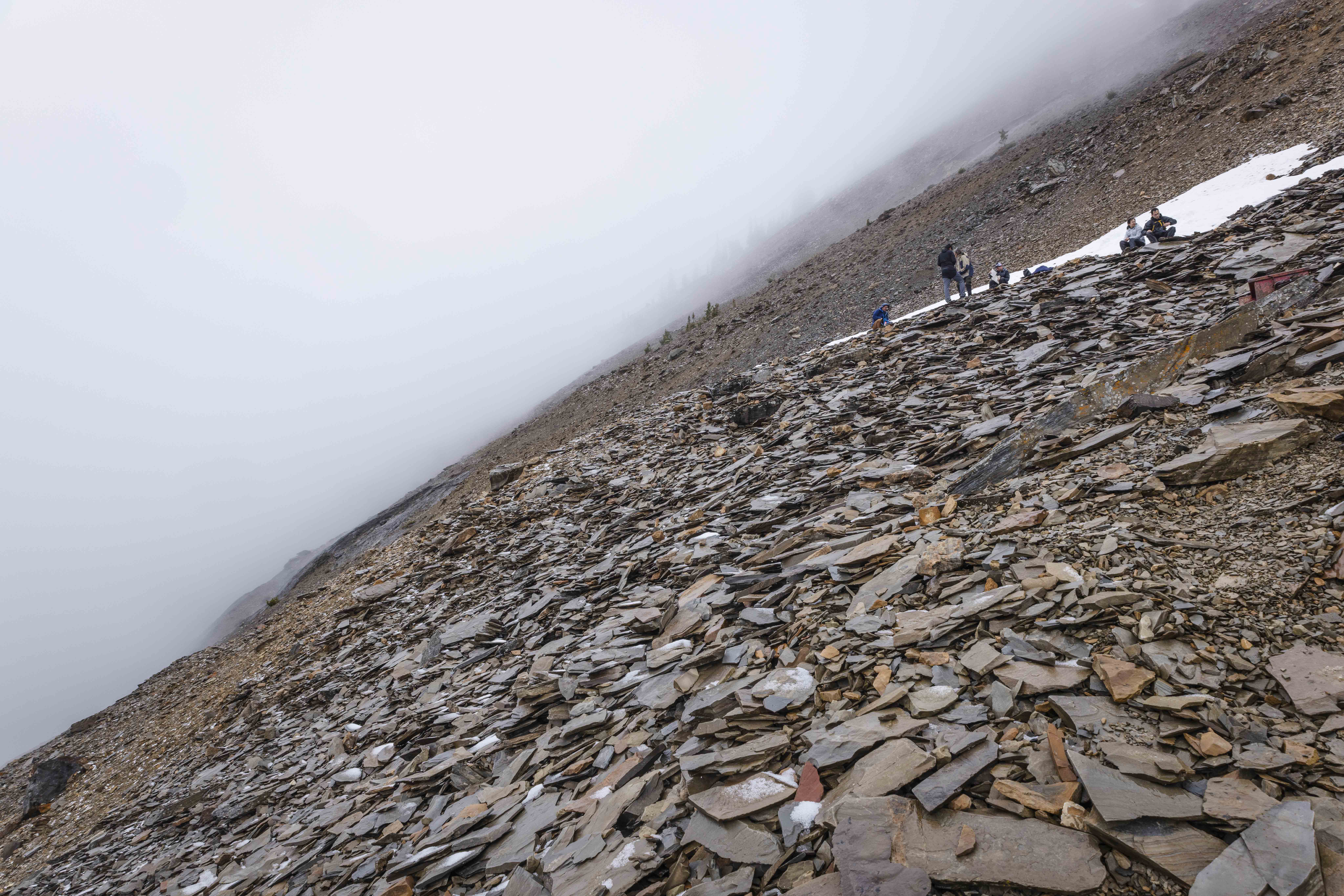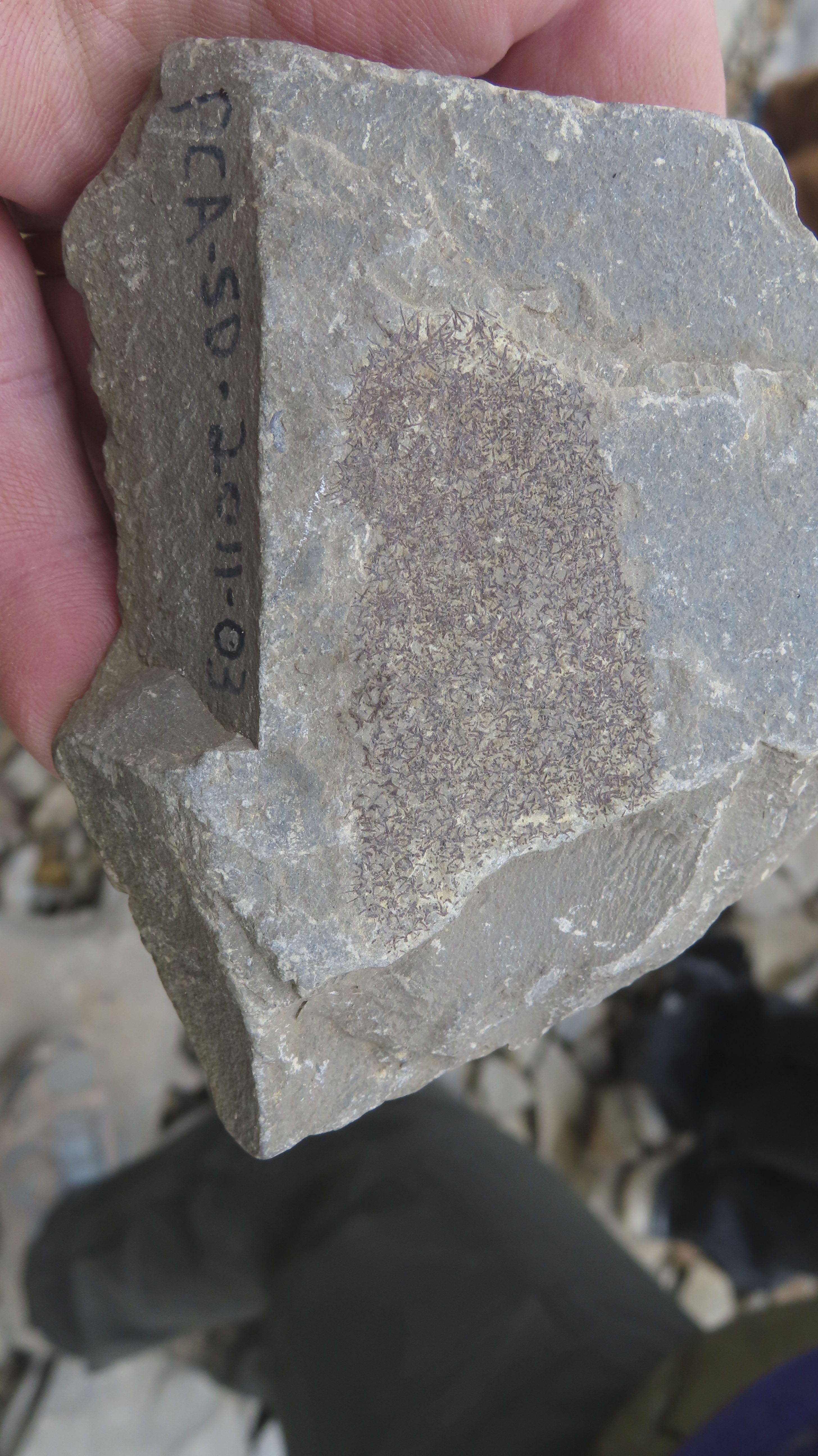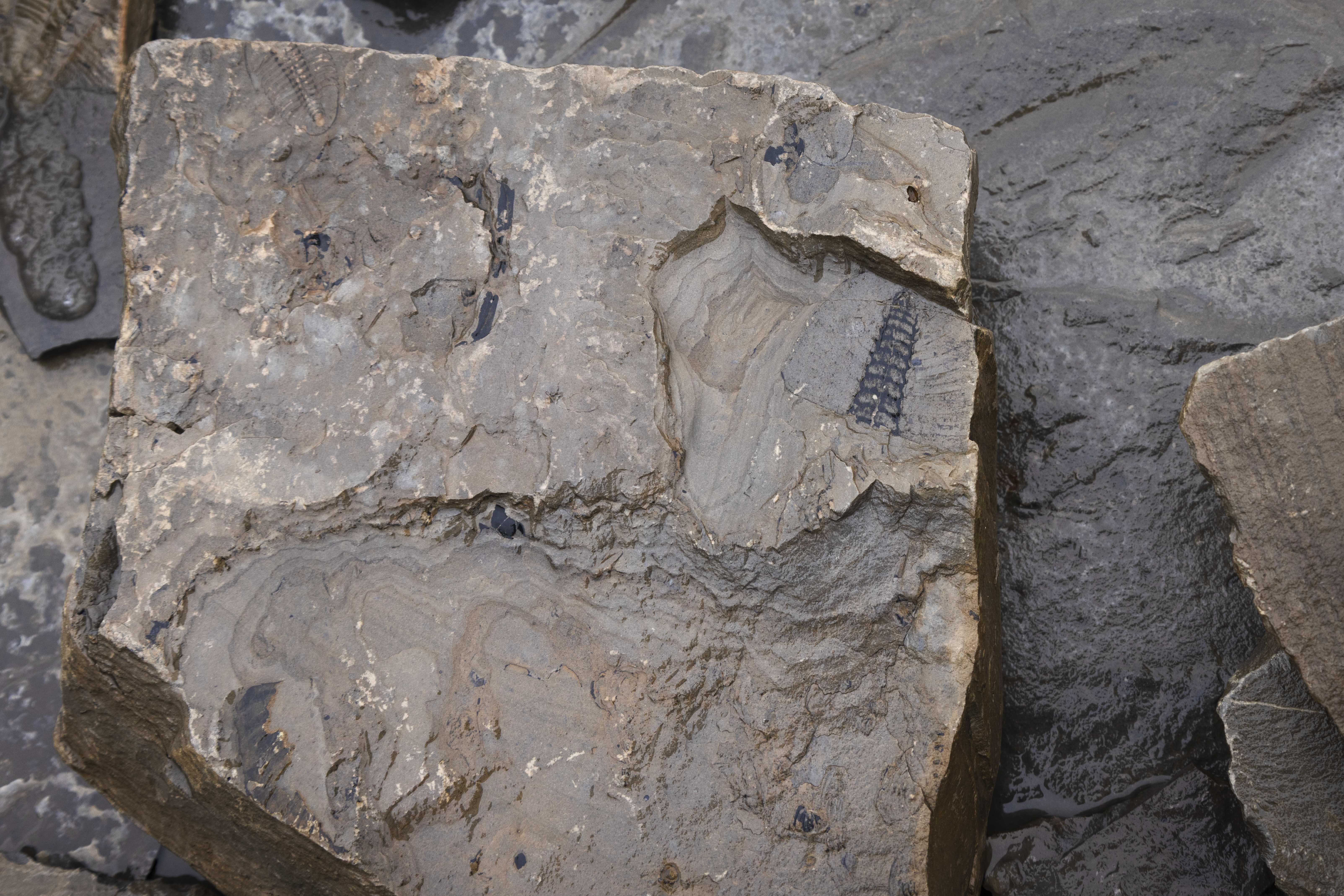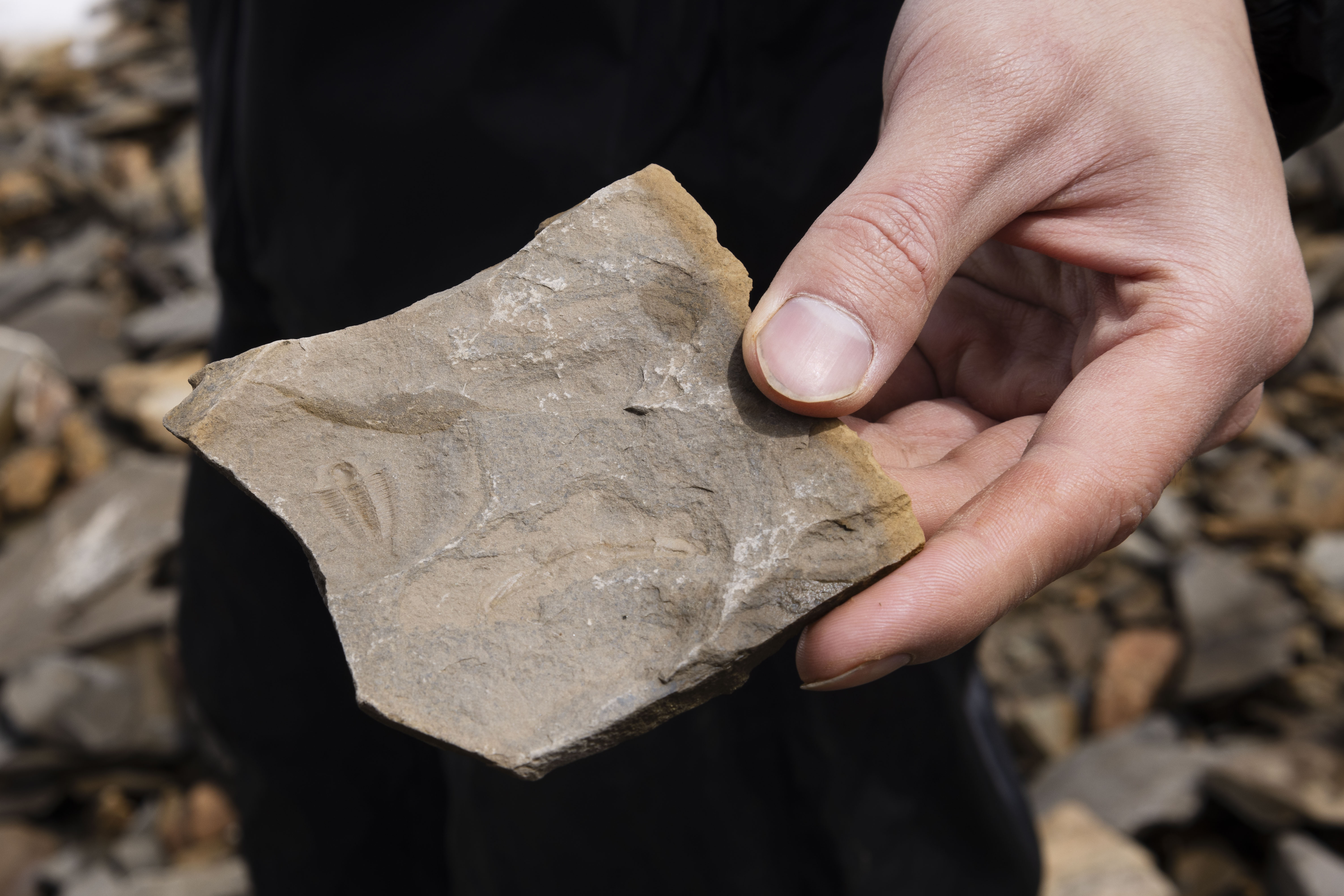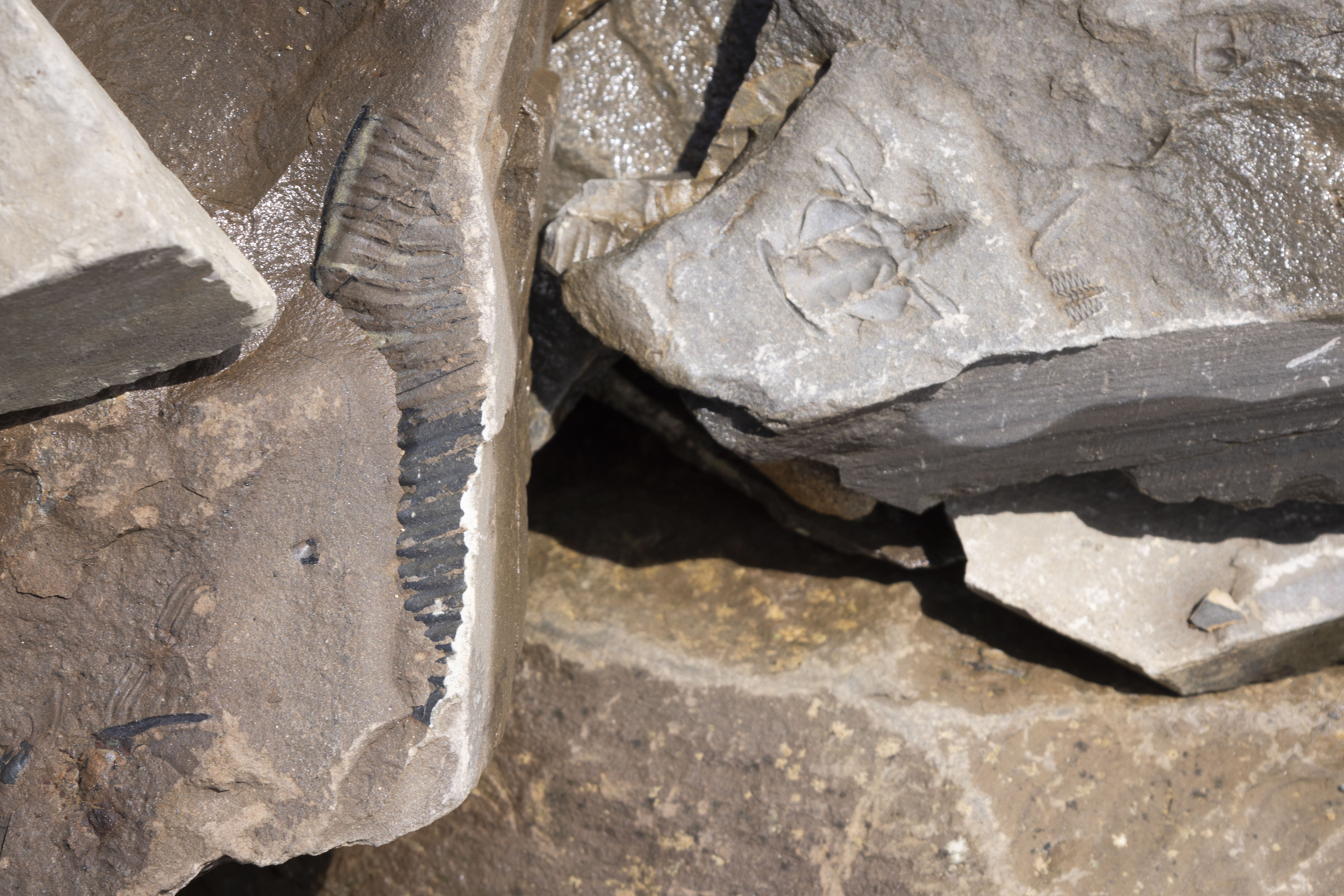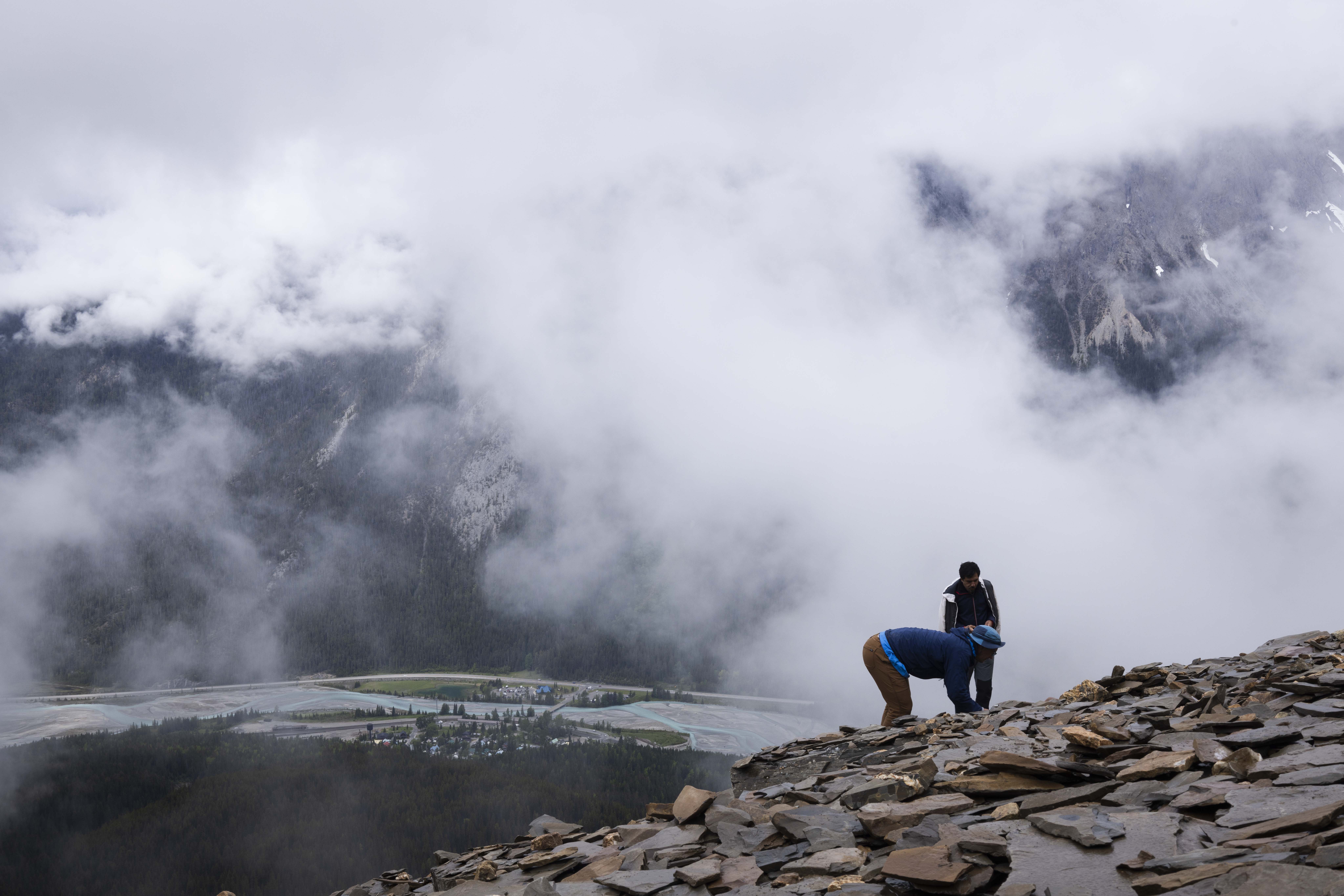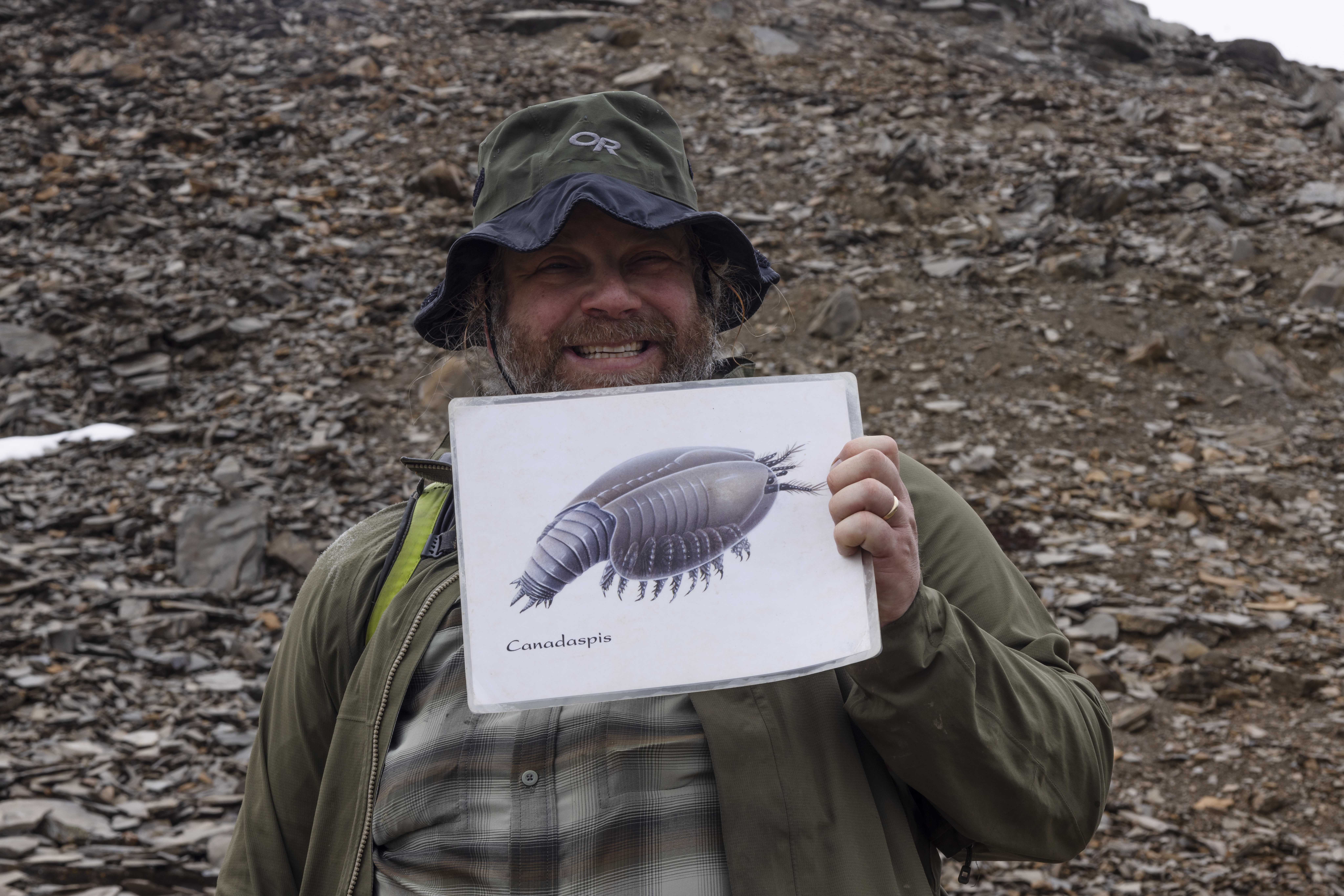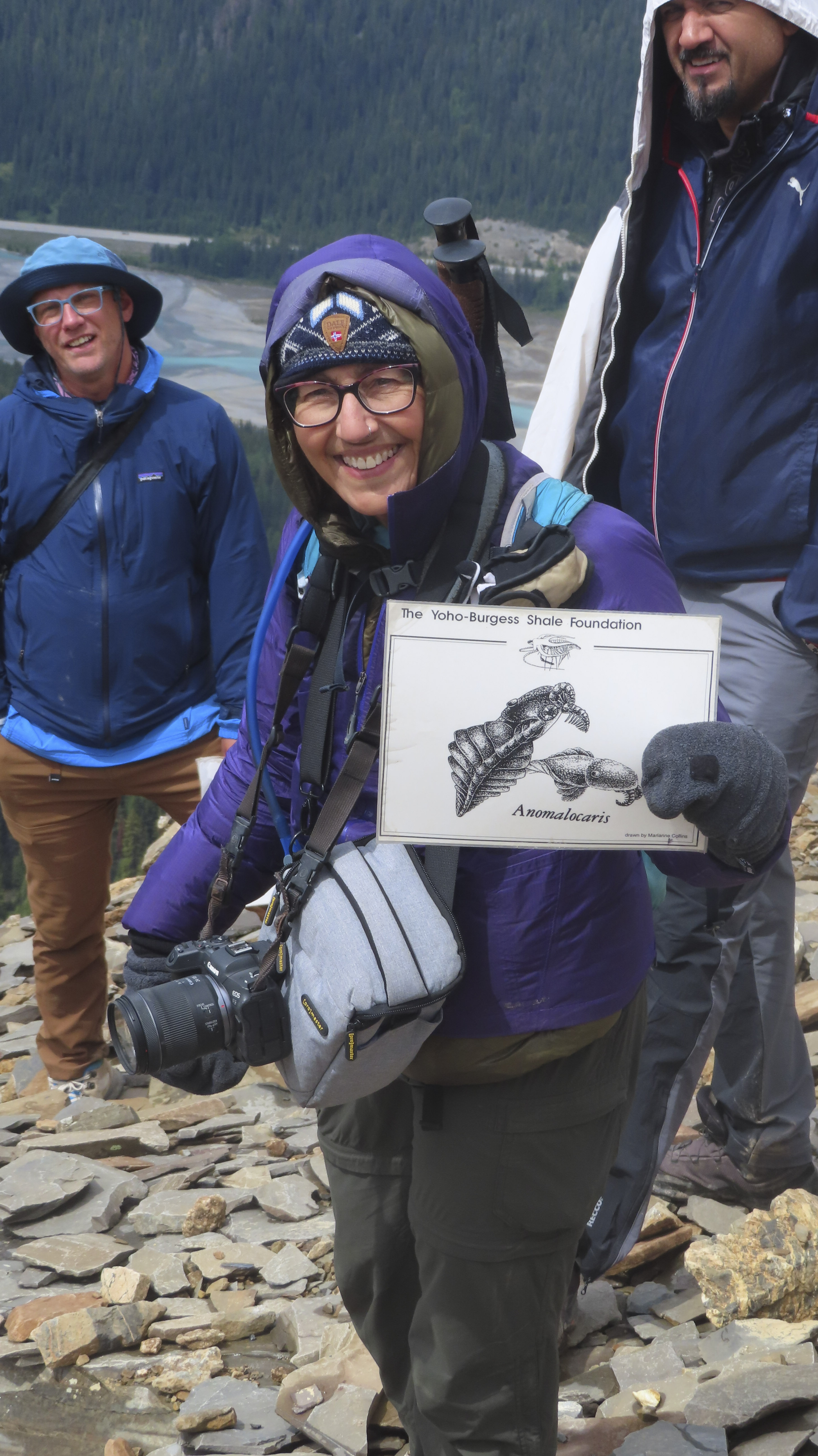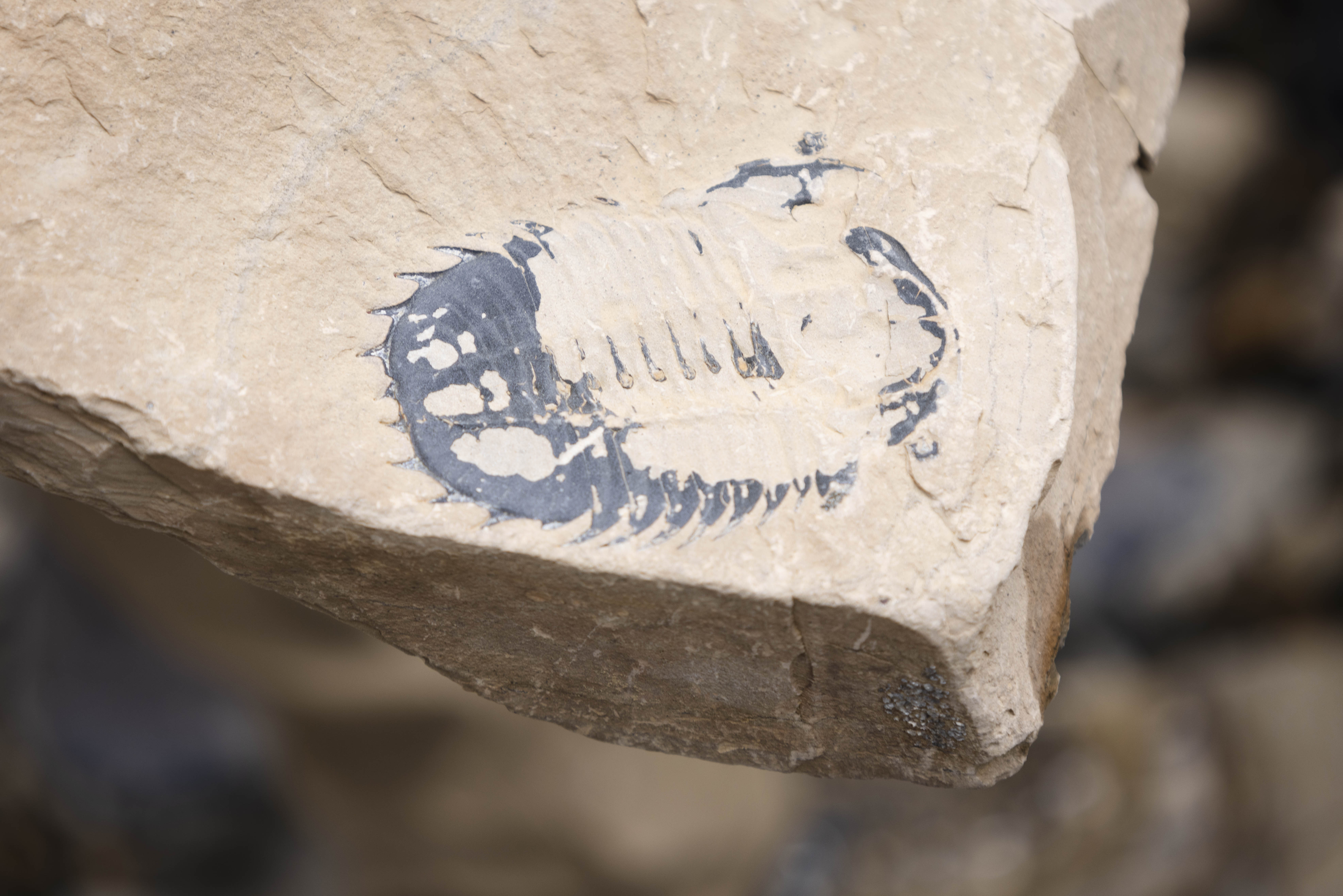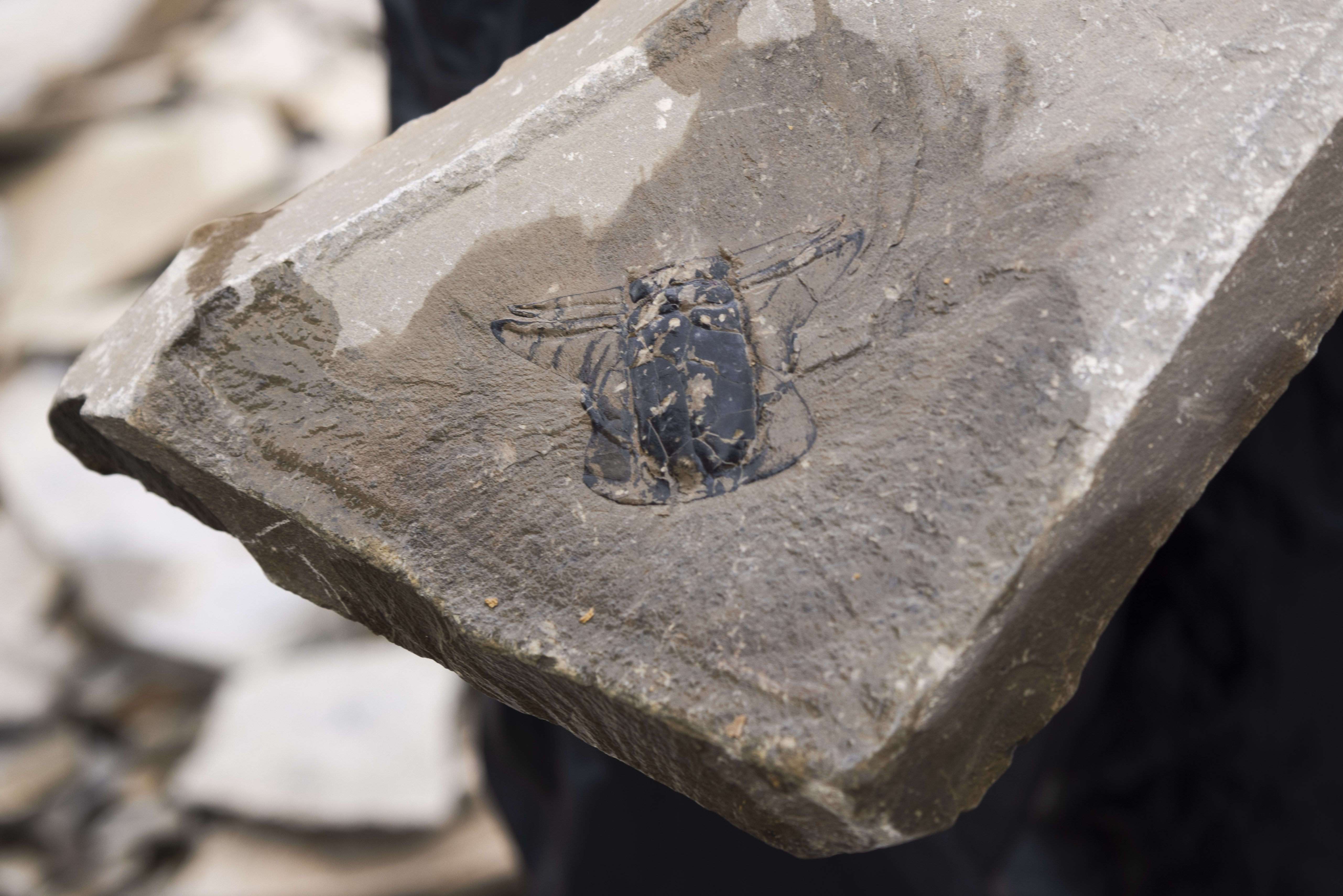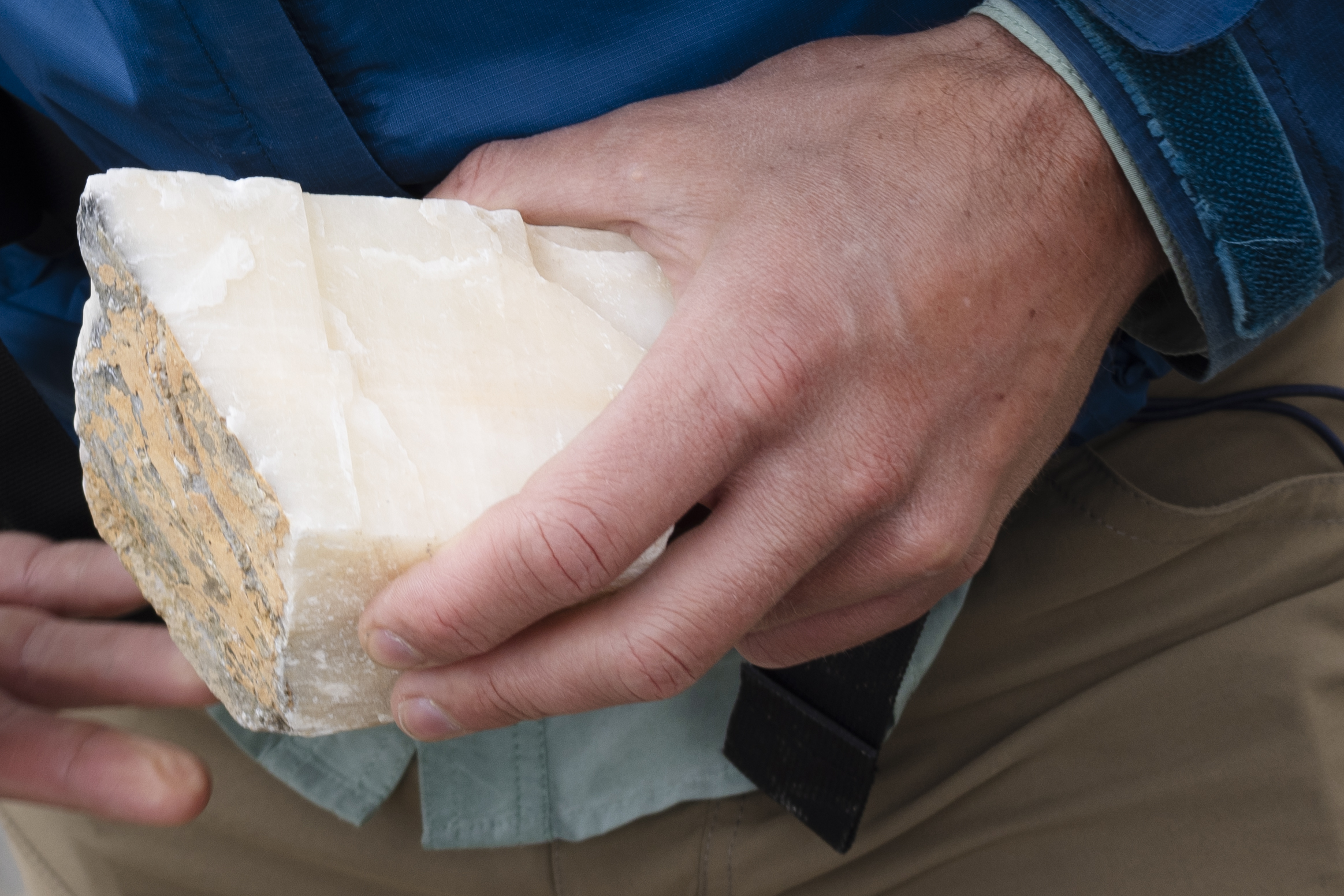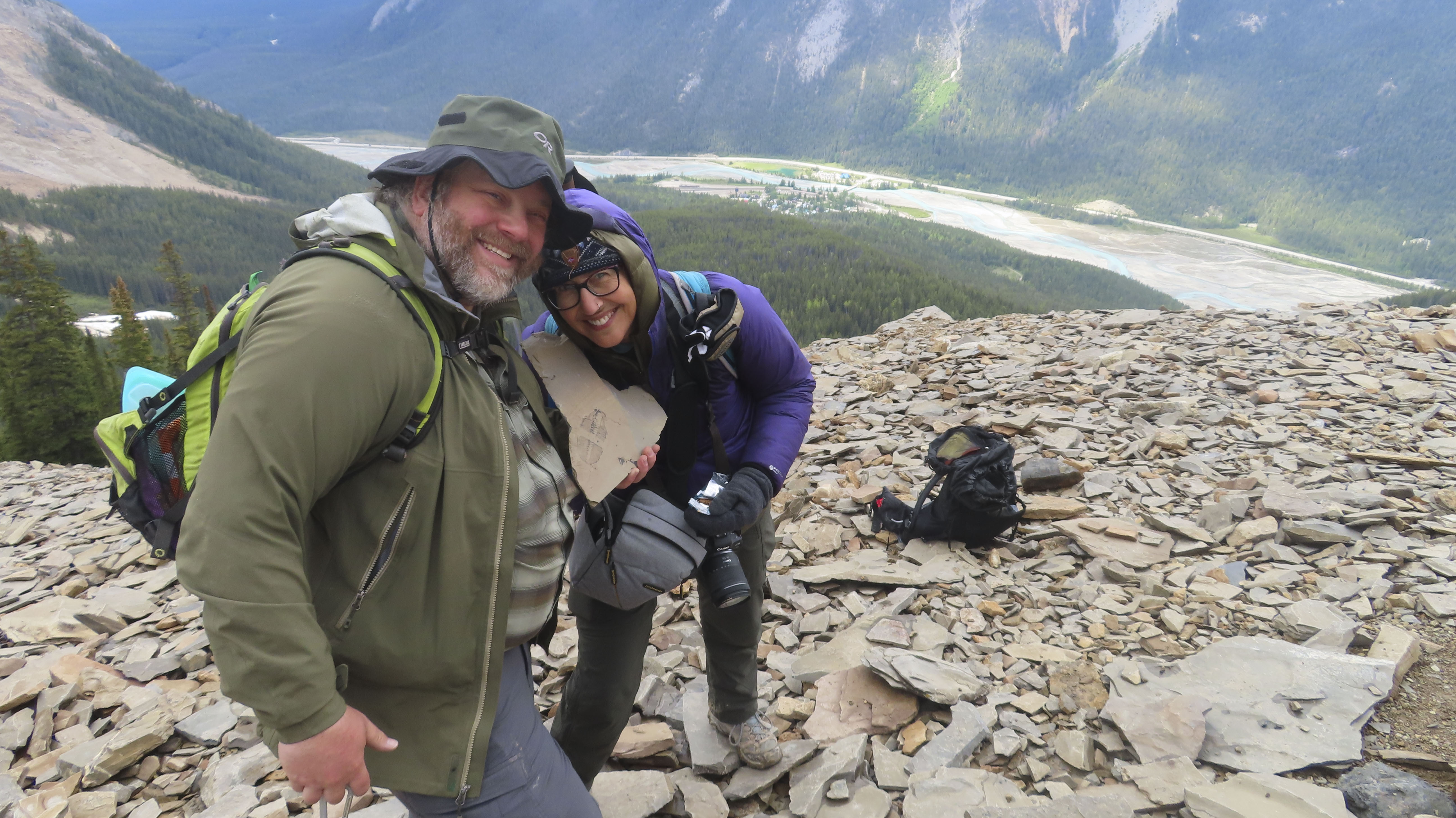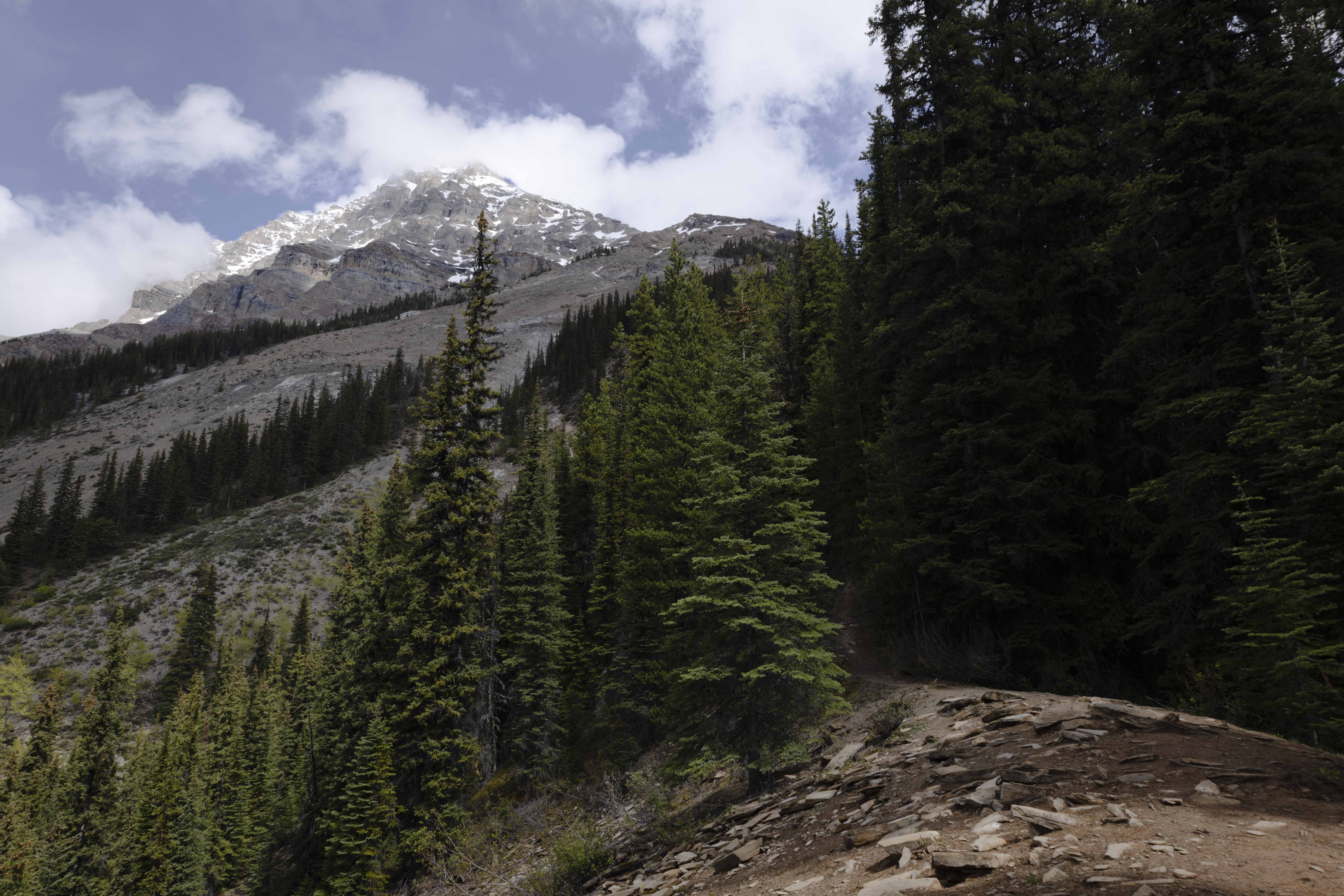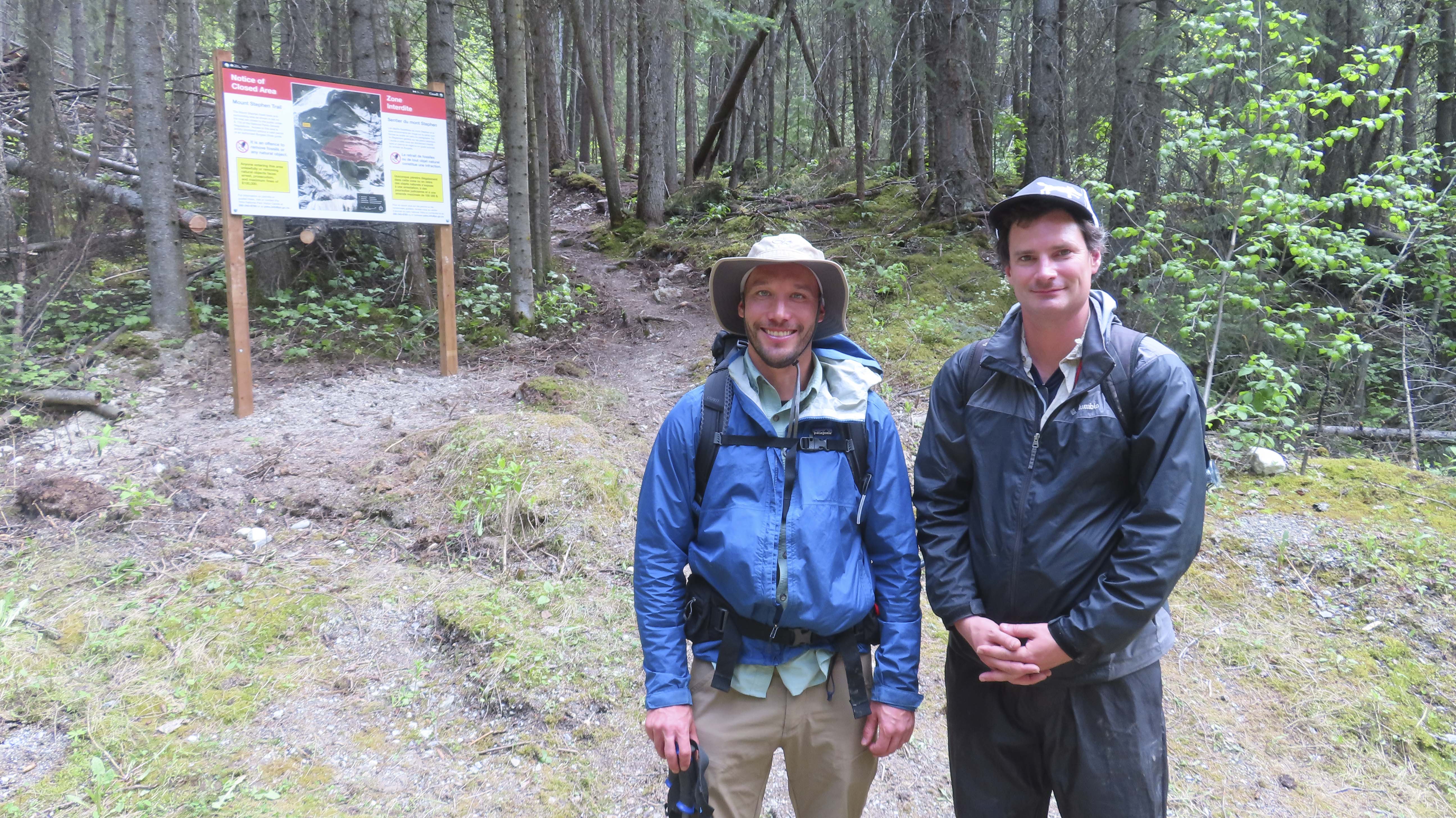Yoho National Park--Burgess Shale Fossils
Saturday 15 June, 2024
Partial trilobite.
Yoho National Park is a designated UNESCO World Heritage Site because of the early Cambrian fossils here. The fossils were found by geologist R.G. McConnell of the Geological Survey of Canada in 1886, as the Canadian Pacific Railway was being bult through the area. Fossils of soft-bodied creatures were preserved as the rock hardened, and exposed as the Rockies rose. The fossils here are almost 2 billion years old.
The Burgess Shale fossils date from a time known as the Cambrian Explosion, when life on earth was much more diverse than it is now. The beds reveal fossils of several phyla that succumbed to extinction. These life forms are from our own planet Earth, but so different from us that George Lucas took inspiration from them for the creation of aliens, especially the ones in the Cantina.
As we had to come almost two hours from Radium Hot Springs to meet the all-day tour, we arrived early and had time to take the obligatory park sign photo.
Because of the sensitivity of the area, you must visit with a group with permits. Parks Canada offers its own tours, but they do not start until July. We went with the wonderful Burgess Shale Geoscience Foundation. While the hike was steep and difficult, if you are capable, I highly recommend visiting this special place with this outstanding group.
Eric photographed our guide, Steven, with the restricted area sign.
The trail ran along what we would think of as a waterfall in California, but it isn't particularly impressive here.
Eric photographed me hiking through the conifers.
We tasted Old Man's Beard, somewhere between a lichen and a fungus. It was very fibrous, better food for deer than for humans.
The trail climbed steeply.
Amazing fungi I found beside the trail.
Eric photographed the snow falling on the trail. This was only the beginning of several days of hiking in snow.
Eric photographed Steven showing us an example fossil. Steven was very fond of the name of Mt. Stephen, and of the Stephen Formation in the rock.
Close-up of trilobite fossils. The one on the left is a moult, the one on the right was alive when it was buried.
We climbed further up the trail through the snow.
Mt. Stephen rose steeply ahead of us.
At last, we reached a broad, open ridge, covered with small rocks. Even standing in one place, you could see fossils all around you on the ground. We picked up rocks and turned them over, finding more fossils.
Eric photographed a fossil of a creature that evolved into a sponge.
Various parts of trilobites. Trilobites far outnumber other fossils in this area.
Trilobite fossil, either Elrathina or Chancia.
Various parts of trilobites.
As our group stood on the ridge examining fossils, the fog began to clear, revealing the dramatic ridge across the valley and highway from us.
Steven gave each of us a card with an example of a Cambrian creature. Eric got Canadapsis. Canadapsis is an arthropod and a crustacean, and crabs and shrimp evolved from it.
Eric photographed me with my creature, Anomalocaris. Anomalocaris' descendents did not survive to the present. We would later run into the guy on the right, in Jasper Town.
Fossil of an anomalocaris.
Trilobite fossil showing the spiky parts called pleurons.
Cephalon (head) of Ogygopsis, a trilobite. You can see where Lucas drew some inspiration.
Our trip's sweep, Antoine, was also a geologist, and found this lovely example of calcite, crystals of calcium carbonate.
Seeing such a variety of ancient life, we could feel the specialness of this place. It gave us a glimpse of the Earth's vast history, and demonstrated how we are just a small part of its continuing history.
Steven photographed us together in the fossil beds. We had hiked up from the valley below.
As we hiked down from this incredibly special place, I looked up at the summit of Mt. Stephen. The fossil beds are not quite that high, they are on the darker shoulder on the right. Still a ways up!
Eric's photo of Antoine and Steven. We were very thankful to them for being such patient, knowledgeable, and informative guides in taking us to this very historic place.
Day 9 distance driven: 231 mi/372 km, cumulative 1,725 mi/2,776 km
On to the Icefields Parkway, Banff and Jasper National Parks.
